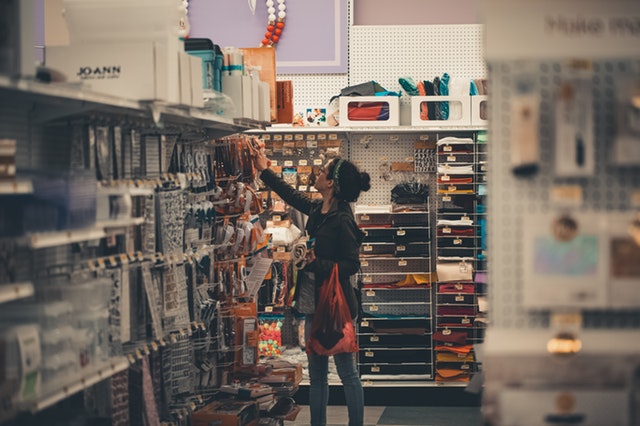In this age of hyper-competition from digital retailers and marketplaces, customer experience has become the top method of differentiating one brand from another and mystery shopping is a great way to measure this. With this research technique, specially trained shoppers participate in and report on a carefully choreographed shopping trip, perhaps to a physical store, a digital store, or a telephone shop, to assess the activation of a company’s brand promise.

We previously discussed the many advantages and disadvantages to mystery shopping so here we will focus more on the process of designing an effective program. As with any research design, an effective program is based on standardized processes that ensure every retail outlet is judged on a comparable scale such that better quality business decisions can be made. So what is the process?
Choose the Scenario
The first step of the mystery shopping process is to identify the key components of the shopper journey that needs to be evaluated. Then, create a list of common scenarios and specifics within each scenario that must be noticed, assessed, and recorded. Consider whether each of these specifics can be assessed in a qualitative or quantitative format via a questionnaire or open-ended, written responses. Components to be assessed could include whether:
- the interior and exterior of the retail outlet were clean and well-maintained, e.g., no litter, clean fitting rooms
- brand signs and promotional signs were current, properly placed, and well maintained
- product displays were clean, fully stocked, and well maintained
- products and services were of good quality, e.g., hot food, thick napkins
- employees were readily and happily available to help customers even when their manager wasn’t around
- employees had sufficient knowledge quickly at hand about products and services to properly help customers
- store associates could guide customers towards other products that might also suit their needs, e.g., appropriate upselling
- store associates were able to handle complaints, returns, and exchanges quickly and pleasantly

Design Your Mystery Shopping Questionnaire
With a list of scenarios and key metrics in hand, the survey instrument that will be used by the mystery shopping can then be designed. It must be clear, organized, and as objective as possible to ensure that data quality is maintained across a large number of mystery shoppers.
As part of this process, the design should consider whether the assessment will focus solely on questionnaire data or also include photographs, video, or recordings of digital shopping. Detailed criteria for any additional media must also be created.
Define Your Target Audience
Once the scenarios have been defined, the key criteria of the mystery shoppers can be identified for sampling purposes. Consider both demographic (e.g., age, gender, income, education) and psychographic (e.g., personality, hobbies, purchases, interests) characteristics when defining the audience. Ideally, this definition should be based on a customer segmentation study to ensure opinions are gathered from a representative range of people. And, consider whether the mystery shoppers must already have an association with the business. For instance, should they have an account at that bank, should they be members of the loyalty program, or should they regularly use voice activated websites.

Choose Representative Locations
Every retail location is different. Each one is based in a unique region of town and serves unique segments of people. As such, your mystery shopping program should measure your full range of outlets. That might mean including your digital store and your telephone services. It also means accounting for rural and urban locations, or locations that serve unusual populations such as areas with a larger number of people who speak English as a second language, or a region that has a much younger or much older population.
Choose an Appropriate Frequency of Measurement
Mystery shopping is best used as a longitudinal method rather than an ad hoc method. For many companies, particularly retail outlets, store associates come and go fairly quickly and new employees are regularly trained to interact with customers. Thus, the frequency of a mystery shopping program must be designed with an eye towards:
- Employee turnover. High turnover necessitates more frequent assessments.
- Performance of the location: Poor performing locations should be assessed more frequently.
- Day and time. Assessment should take place on weekdays, weekends, days, evenings, and nights, not just at 9am on Mondays.
Design the Report
As one of the very last stages, designing the mystery shopping report is often a neglected step in the process. However, every earlier step of the mystery shopping process should lead directly to this step. Consider who will use the end results and what they need to see in the questionnaire and subsequently in the output. Identify the types of data that will create actionable insights for them and how those data need to be presented so that they can act on the results. Even better, prepare your results so that they can be easily uploaded into a mystery shopping dashboard. This will allow you to track your results on a regular basis from anywhere.

Understand Industry Norms
Customer expectations of the shopper experience vary widely by industry and location. What registers as an excellent experience in banking or telecommunications might register as a sub-par experience in retail. The same can be true for the time of day – people might have much higher standards by the end of the day when they’re tired and just want everything to work instantly. If you work with a third-party supplier, they will be able to share their experiences with other companies in your industry and outside your industry so you can truly understand whether your customer experience is Best in Class, or Best in Industry.
Choose A Trusted Supplier
Choosing a trusted supplier seems like an obvious, and perhaps self-serving, part of the process. But there are good reasons for doing your homework and finding the supplier who will be best for you. The best suppliers maintain large databases of mystery shoppers representing a wide range of demographic criteria over a wide region and over a broad area of expertise. Trusted suppliers get to know their mystery shoppers over numerous studies and weed out the weak shoppers keeping only the most thorough and skilled shoppers on their roster. And, the best suppliers will build a program that’s right for you not right out of a template.
When you’re ready to create a mystery shopping program in Canada, please get in touch with us. We’d love to help you build a top-notch program that generates high quality results.




